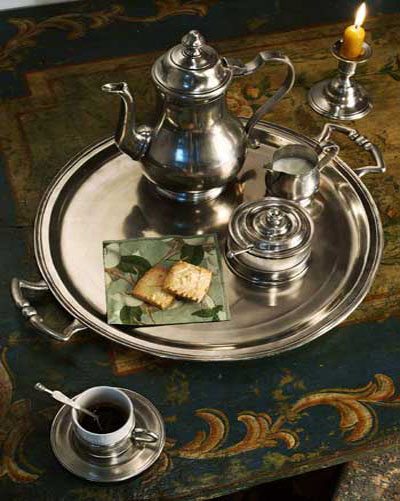The spread and Development of Coffee History

The spread and development of coffee
European historians argue that as early as 800 years ago, there were artificial coffee trees for trade in Yemen in the southern Arabian Peninsula, and there was historical evidence that at that time, there was indeed trade across the Red Sea between Yemen and Ethiopia.
It is speculated that if the use of coffee was discovered by Ethiopians, coffee was introduced into the Arabian Peninsula during this period and was widely grown in Yemen.
Even so, there is still a myth in the Arabian Peninsula: "once a flock of big birds with ripe coffee fruits flew across the Red Sea and dropped them in Yemen, so that coffee began to grow in Yemen."
There is no way to prove the myth, and so far there is no historical evidence to prove the exact time and reason why the coffee arrived in the Arabian Peninsula, but one thing is certain that Ethiopia did invade the southern tip of the Arabian Peninsula in 525. And ruled Yemen for half a century.
As a result, people tend to believe that coffee was introduced into the Arabian Peninsula during this period. In the very long centuries since then, coffee has been used as a refreshing, refreshing or special medicine for Islamists to cure diseases in Arabian Peninsula. at the same time, people's methods of making coffee have become more and more perfect.
It was not until around the 15th century that coffee was widely spread among ordinary people as a popular drink. At the end of the 16th century, the story of Arabs drinking "black molasses boiled from black seeds" was spread verbally among many European travelers. It can be confirmed that the Arabs at that time already knew how to bake and cook coffee.
After coffee became a popular drink in the southern Arabian Peninsula, it was brought home by Islamists who made a pilgrimage to Mecca, where it began to spread rapidly in Arab countries and landed in Turkey and Persia one after another.
The widespread acceptance of coffee will inevitably lead to the birth of cafes. It is said that the earliest cafes were born for religious reasons, but they soon evolved into places for people to draw and chat, a tradition that continues to this day.
As for where the world's first cafe was born, there are two main arguments: one is that it was born in the 15th century in Constantinople, the capital of Turkey (present-day Istanbul), where bridge is said to have been born; the other is that it was born in the shrine of Islam in the early 16th century.
But no matter where it was born, its significance goes beyond providing a place for people to drink coffee and chat.
As historian Ukes wrote in his most authoritative book, the Coffee World, "whenever coffee is introduced, it encourages the revolution." Coffee is the most extreme drink in the world. Caffeine stimulates thinking. Once people think deeply, they want to rebel, endangering the status of tyrants. "
His famous saying was first confirmed in the holy city of Mecca. People gathered in Mecca cafes to openly discuss politics and satirize those in power. Some sarcasm reached Berg, the young governor of Mecca at the time, who, in a rage, ordered the closure of all Mecca cafes in 1511.
The ruler of Mecca is not the only one who hates coffee. Cafes in Turkey have been ordered to close, and coffee has been listed as an illegal drink to prevent people from making reactionary remarks while drinking coffee.
Those who drink coffee in violation of the law will be beaten with a stick, and the repeat offender will be sewn into a leather-sewn bag and thrown into the Bosporus (today's Istanbul Strait).
The spread and Development of Coffee in America
Coffee was first drunk in North America in 1688, and soon after, cafes appeared in New York, Philadelphia, Boston, and other towns.
The Boston riots of 1773 were planned in a cafe called Green Dragon. Both the New York Stock Exchange and the Bank of New York were founded in cafes, in what is now known as the financial district, Wall Street.
Coffee was first grown in the United States in the 1820s, a process that is perhaps the most fascinating and romantic story in coffee history.
Gabriel is a French navy serving in Martinique. On his way to Paris on a business trip in 1720, with the help of others and rich personal charm, he got a coffee tree and brought it back on the boat. To keep it warm and prevent saltwater from attacking, he placed the tree in a glass box on the deck.
The voyage was full of accidents, at least as described in Gabriel's diary. The ship was attacked by Tunisian pirates and encountered a severe storm so that the trees needed to be tied down. Our hero had a fierce fight with an enemy who deliberately hurt the tree out of jealousy, in which a branch was torn off, but the whole tree survived.
The sea finally calmed down, the ship stopped, and drinking water began to be distributed regularly. Gabriel used the precious water from priority on the coffee tree, and finally the ship reached Martinique, where the tree was replanted on Pribel, surrounded by thorn hedges and guarded by slaves.
It began to grow and reproduce, and by 1726, the first harvest had arrived. According to historical records, there were 18 million to 19 million coffee trees on Martinique by 1777, and a cash crop that could be grown in the New World appeared at the right time.
But it is the Dutch who really popularize coffee crops in central and southern America, where coffee is now the main continental cash crop.
Coffee first arrived in the Dutch colony of Suriname in 1718, followed by the first cultivation in many parts of French Guiana and Brazil's Para region.
In 1730, the British introduced coffee to Jamaica, where the Blue Mountains now produce the most famous and expensive coffee in the world.
Before 1825, South and Central America were on their way to coffee. Another significance of this time is that coffee is grown for the first time in Hawaii, where it produces the only American coffee and one of the highest quality coffee.

The spread and Development of Coffee in Europe
From the end of the 15th century to the beginning of the 16th century, coffee was already a popular drink in the Middle East, but it was also regarded as a kind of medicine. European ambassadors and merchants in the Turkish Empire also believed that coffee was a healthy drink with special curative effects, and many positive comments helped to import coffee into Europe.
Lovov, a famous German doctor and botanist, wrote a book about coffee as early as 1582. However, it was the Venetians who first imported coffee beans in 1615.
Venice in 1645 gave birth to the first open street cafe in Europe. Paris and Vienna also followed, with relaxed and romantic French sentiment and Viennese literati temperament in their own style, which became the forerunner of the two major trends of European cafes in the future.
Before Spain and Portugal built strong fleets, trade between Europe and the Middle East was tied up by the Venetians, so historians were not surprised that the first coffee bean in Europe was brought in by the Venetians.
At that time, coffee was very expensive and too extravagant to drink. At first, it was mainly sold to European pharmacists, but it became more and more popular at the end of the 17th century. Traders who hawked lemons or herbs along the street also began to sell coffee, thus becoming the most civilian drink in Italy.
Although coffee drinks were quickly accepted, Christian conservatives complained that coffee was a "Satan drink" and asked the pope to ban Christians from drinking coffee because Muhammad forbade Muslims to drink Christian wine. Muslims replace wine with coffee, and if Christians follow suit to drink coffee, they will become Muslims.
It is said that the Roman church "Emperor Clement VIII" took a sip of coffee and said, "Wow, Satan's drink is so delicious. If it is enjoyed exclusively by non-Christians, it would not be sad. We might as well give coffee a holy name and make fun of Satan." Let coffee be the drink of Christ. "
At the end of the 17th century, many cafes appeared in St. Mark's Square in Venice, which immediately became a meeting place for ordinary people or royal aristocrats. The Caffe'Florian, a well-known cafe still open in the square, was founded in 1720, when there was no postal service, and guests always liked to entrust letters or items to Caffe'Florian, transferred by the shopkeeper, and this cafe became an important information center in Venice.
Spread and Development of Coffee in China
The history of the introduction of coffee into China is not long, and it was not until 1884 that coffee was first planted in Taiwan Province.
In the mainland of the motherland, the earliest coffee cultivation began in Yunnan. At the beginning of the 20th century, French missionaries brought the first batch of coffee saplings to Binchuan County, Yunnan Province, and began to grow coffee in the mainland.
Chinese people have been drinking tea for thousands of years. As the origin of tea in the world, people more or less ignore or despise coffee as a foreign beverage in their consumption habits and concepts. For quite a long time after coffee was introduced into China, the cultivation of coffee has not been paid enough attention by people, and the development is very slow.
In terms of natural conditions, many parts of China are very close to Latin America, South America, India, Indonesia and other places, with the congenital conditions of coffee cultivation, but the traditional culture and customs restrict the development of coffee in China.
Until recent years, as more coffee has entered the lives of ordinary Chinese people, and with the impact of foreign culture and way of life, coffee cultivation has gradually developed in China.
Now, there are considerable coffee planting bases in Yunnan, Hainan, Guangxi, Guangdong and other provinces in China, and some world-famous coffee companies, such as Maxwell, Nestl é, Colombia and so on, have set up branches in China. They not only sell coffee products to China, but also purchase coffee beans from coffee planting bases in China, which not only promote coffee sales in China, but also promote the development of coffee planting industry.
Important Notice :
前街咖啡 FrontStreet Coffee has moved to new addredd:
FrontStreet Coffee Address: 315,Donghua East Road,GuangZhou
Tel:020 38364473
- Prev

The origin of the name of coffee in the history of coffee
The origin of the name of coffee begins with Ethiopian legend in the 5th century AD, when the sheep of the shepherd boy Kadi was so excited after eating a strange red fruit that Kadi and his companions could not help but give it a try. Spread ten, ten hundred, this red fruit has since become a part of the local food culture, this red fruit is coffee. After that
- Next

On Coffee Culture in Coffee History
Coffee is a kind of culture, a kind of global culture, but also a kind of regional culture, which can be said to be a kind of global culture with regional differences. So different countries, combined with their different cultural backgrounds, thus formed different coffee cultures. Arab coffee culture as the first region in the world to drink and produce coffee, Arab coffee culture is like its coffee.
Related
- How did the Salvadoran coffee industry develop in Central America?
- What exactly does the golden cup extraction of coffee mean?
- The Origin of Coffee flower
- [2023 Starbucks World Earth Day] there are more meaningful things besides free Starbucks coffee!
- What kind of coffee is there in Spain? 9 Flavors of Spanish Coffee
- Aromatic African coffee| Kenya's coffee culture and historical production area
- Liberica Coffee Bean knowledge: the characteristics of Liberian Coffee beans of the three original species of Coffee beans
- The origin and formula of Spanish latte introduces the taste characteristics of Bombon coffee in Valencia, Spain.
- How to adjust the solution of over-extracted coffee
- What is the tasting period of coffee beans? What is the period of coffee and beans? How should coffee wake up and raise beans?

